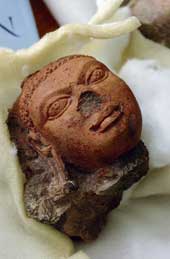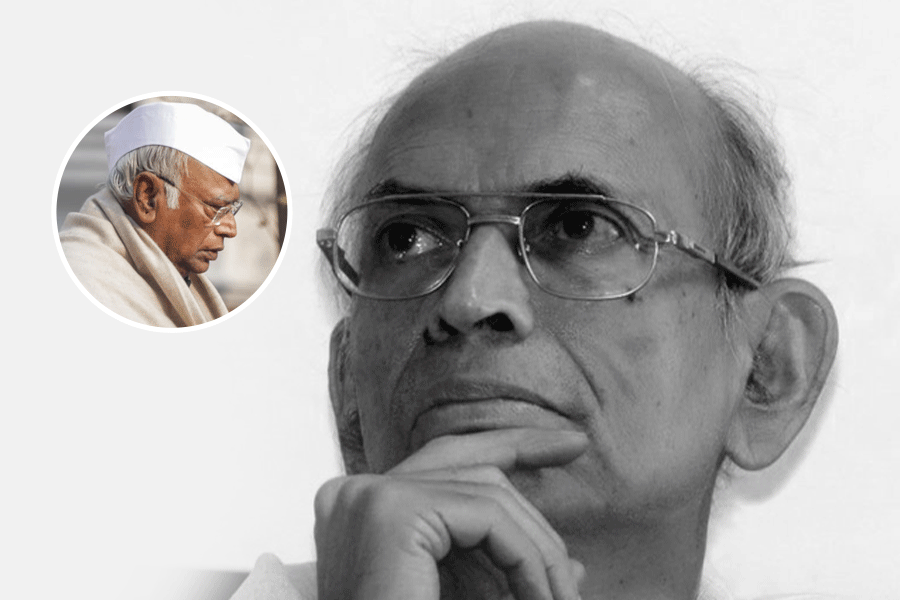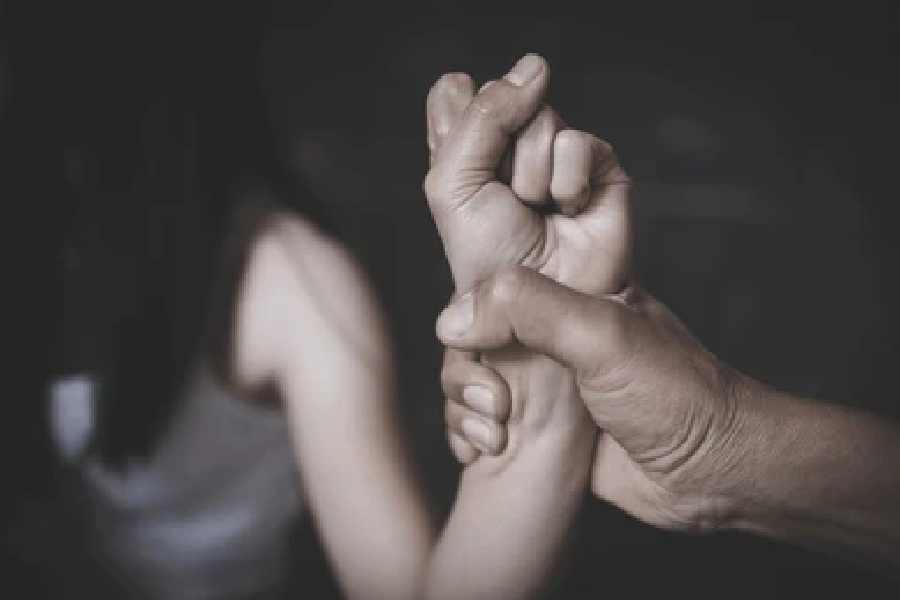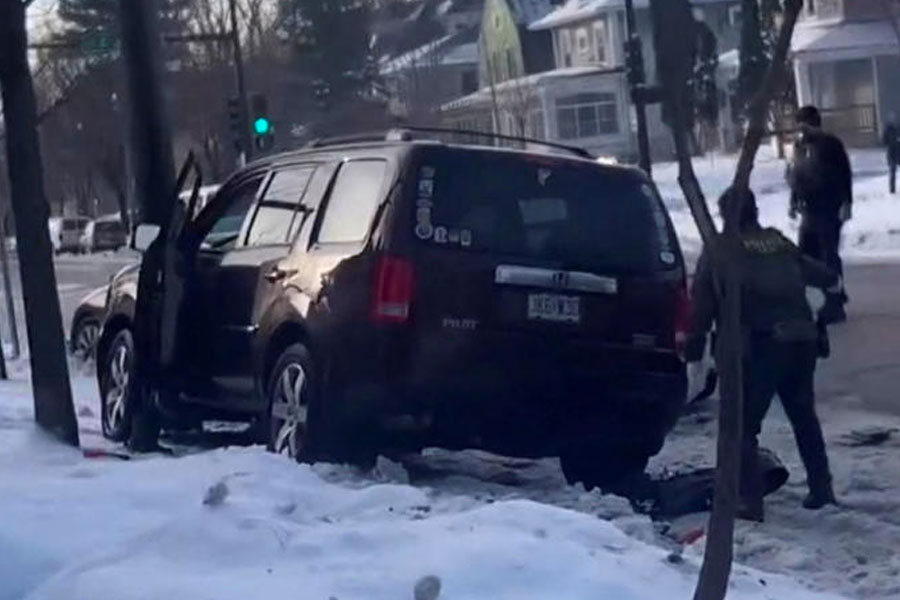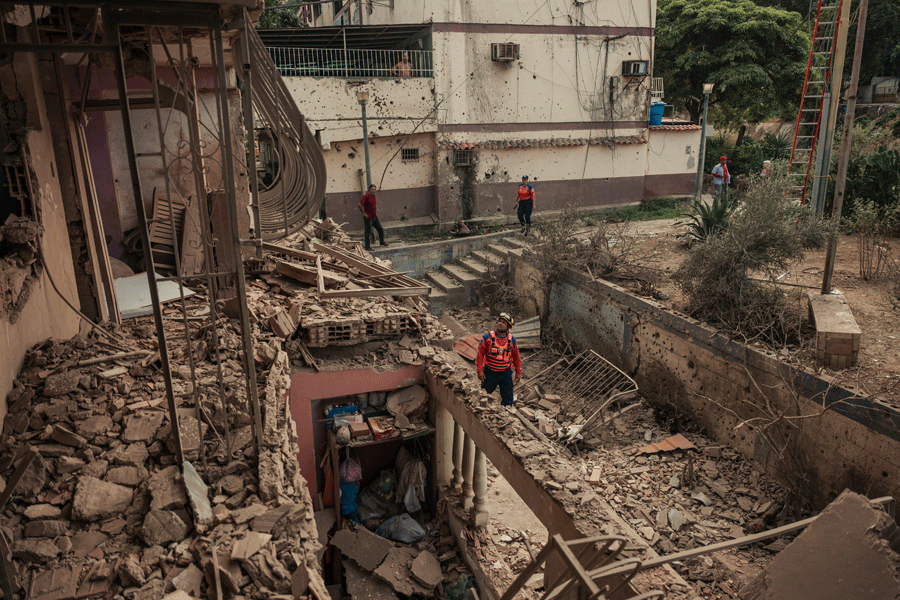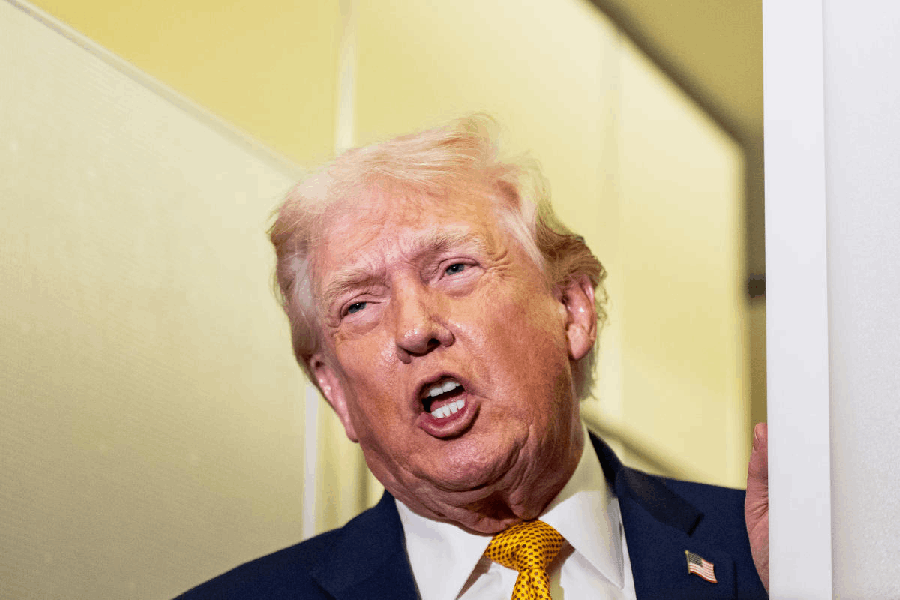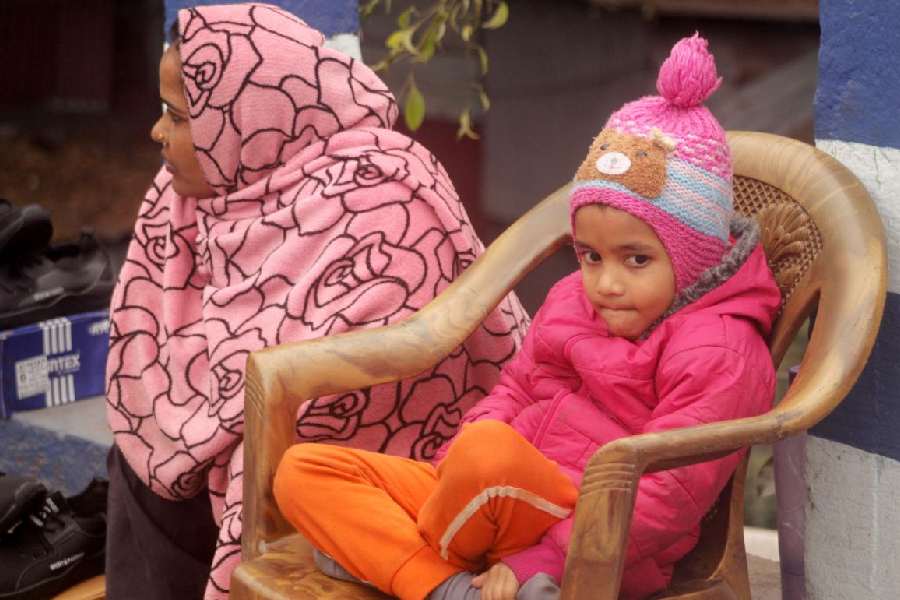 |
| A terracotta statuette found at the site. Picture by Amit Datta |
As excavation continues at the twin sites of Dhosa and Tilpi, in Joynagar, around 50 km away, more and more historical treasures are being brought into Calcutta, to be tested, labelled and stored.
The terracotta seal and dedicatory brick bearing Brahmi inscriptions, that were brought to the city on February 18, confirmed the view of archaeologists like Gautam Sengupta, Bengal?s director of archaeology and museums, that they belonged to a highly-evolved civilisation of the 2nd and 1st Century BC.
In less than 20 days, the site at Dhosa has proved its superiority over earlier archaeological sites in the same region.
Archaeologists were earlier impressed by the array of perforated tiles, beads, cast copper coins, terracotta statuettes and rouletted glazed pottery.
They are now confronted with definite evidence that the emerging structure at Dhosa was a religious centre, probably linked with Buddhism from the Gupta period.
?Never before have we found evidence of the popularity of Buddhism, mentioned by travellers like Fa Hien, in lower Bengal,? said Sengupta, as the underlying structures of a rectangular hall and a circumbulatory passage emerged at Dhosa.
Found recently is a terracotta Buddha head and a male torso, which bear ?the typical features of early Gupta era ? a blend of high refinement and formal power and the single-beaded necklace?, said Sengupta.
Both items found at Dhosa bear markings suggesting their having once been fixed to an architectural niche. ?There is also evidence that the visible structure was built over an earlier one,? said Sengupta.
This, he said, is borne out by the two hand-modelled plaques found at Dhosa, which date from the early Sunga or Kushan period.
?One plaque is particularly beautiful and interesting. It shows a plate of grain on a raised platform. On one side of this platform is a seated figure playing a harp and on the other are dancing women and a few monkeys. The fact that the figure?s feet rest on a stool suggests he was royalty. Above all can be seen the shapes of an architecture,? said Sengupta.
Does this narrative plaque hold images of an early harvesting festival? Is the architecture faintly seen the one that once stood at Dhosa? Everything is open to speculation and study.
Digging will continue till early April and the site area has already been extended, thanks to the cooperation of local people who are also guarding the sites.
All finds will be on public display at a soon-to-be-inaugurated museum in Behala.

